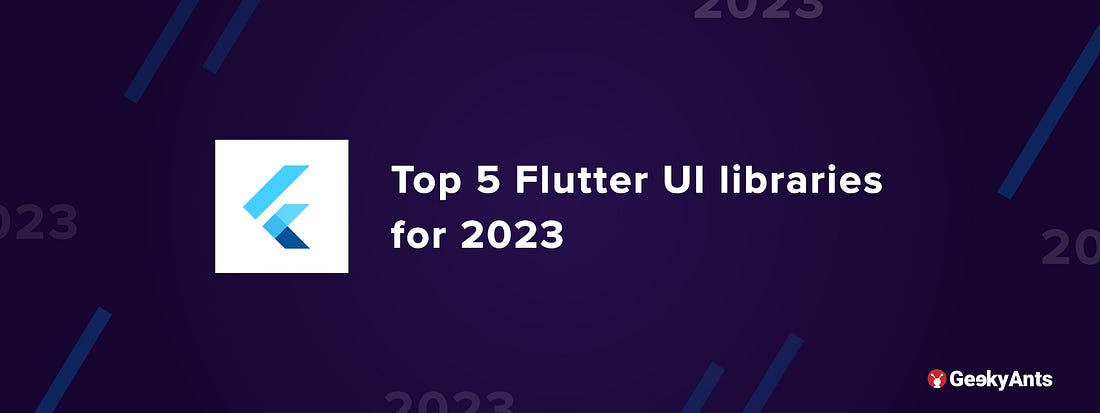In 2023, Flutter will likely remain a popular choice for building trendy and fast mobile applications.
Reasons:
- Flutter has a rich set of customizable widgets and provides seamless integration with native code.
- Flutter allows developers to create high-quality user interfaces (UIs) with minimal coding compared to traditional languages.
This has led to the mushrooming of Flutter UI libraries. We put a few to some experimentation and tests. Based on our analysis, here are the Top Five Flutter UI libraries for 2023:
1. Flutter Material Design
This is the official UI library from Google for building Flutter apps. It uses the Material Design guidelines, and boasts a personalization window of the highest order.
Advantages:
- Wide range of ready-to-use widgets, such as buttons, cards, and sliders
- Easy to customize components based on brand image
2. Flutter Cupertino
This library provides a set of widgets that replicate the look and feel of iOS applications. It’s a great choice if you want to build a Flutter app that feels native on both Android and iOS.
3. Flutter Bootstrap
This library makes it easy to incorporate Bootstrap, a popular front-end framework, into your Flutter app.
Advantage:
It provides a wide range of customizable widgets, such as navbars, alerts, and forms. Each widget can be easily styled to match your app’s design.
4. Flutter Sticky Headers
This library allows you to create sticky headers in your Flutter app that stay fixed at the top of the screen as the user scrolls. It is a great way to keep important content visible as the user navigates through your app.
5. Flutter Animated Background
This library allows you to add beautiful, animated backgrounds to your Flutter app. It’s a great choice for adding visual flair to your app.
Conclusion
Selecting the proper UI library for your project is a huge plus. It is going to make the workflow easier and reduce the turnaround time of the development process.
However, do keep in mind the following when making a choice:
- Do not compromise on usability for aesthetics
- Prefer reusable and editable components
- Choose libraries that can integrate with your workflow
